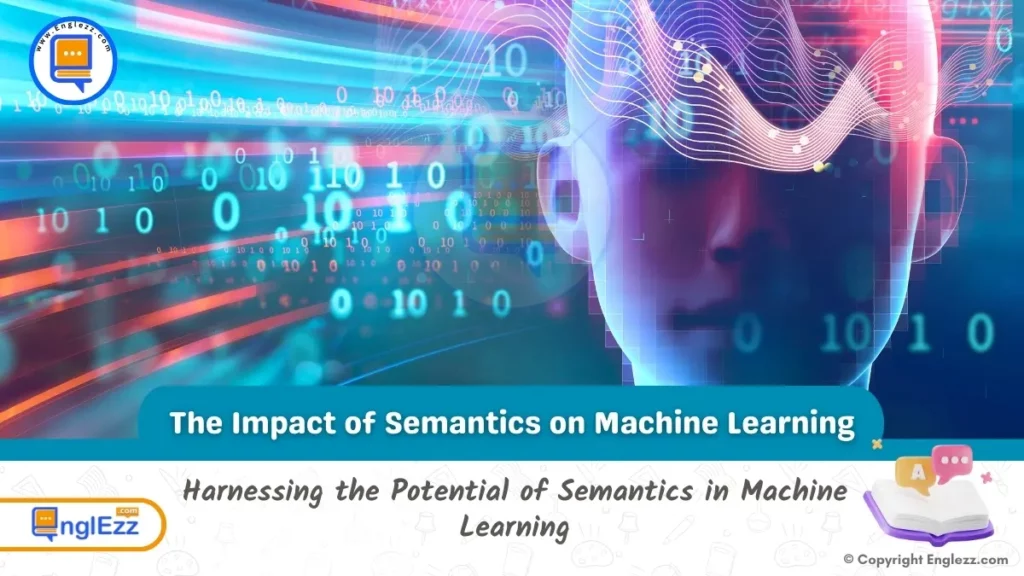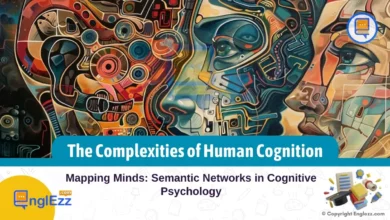Have you ever wondered why your smart assistant sometimes misunderstands you? It all boils down to semantics—the study of meaning that plays a critical role in how machines interpret language. In this article, we’ll explore the fascinating relationship between semantics and machine learning, highlighting its significance in creating more intelligent systems. Get ready to discover how unlocking the power of meaning can lead to smarter, more responsive technology in our everyday lives.
Table of Contents
- Unlocking the Power of Meaning: The Impact of Semantics on Machine Learning
- The importance of semantics in machine learning
- What are semantics and why do they matter?
- The role of semantics in Natural Language Processing
- The impact of semantics on machine learning models
- How to represent meaning in machine learning
- The importance of domain knowledge in semantics
- How to validate and evaluate semantic models
- The potential applications of semantic machine learning
- The benefits of semantic search in machine learning
- Common challenges in implementing semantic machine learning
- How to overcome the challenges of semantic machine learning
- The future of semantic machine learning
- Real-world examples of semantic machine learning in action
- The Importance of Human-centered design in semantic machine learning
- Conclusion
Unlocking the Power of Meaning: The Impact of Semantics on Machine Learning
The rapid advancement of machine learning has revolutionized the way we approach artificial intelligence, with applications ranging from self-driving cars to personalized medicine. However, despite these impressive feats, the foundation of machine learning remains rooted in a crucial yet often overlooked aspect: semantics. The words and phrases we use to describe the world around us hold the key to unlocking the true potential of machine learning.

By harnessing the power of semantics, we can imbue machines with the ability to understand the nuances of human language, making them more accurate, more efficient, and more capable of tackling complex tasks. In this post, we’ll delve into the fascinating world of semantics and explore how it’s poised to transform the field of machine learning, from natural language processing to knowledge representation and beyond.
The importance of semantics in machine learning
In the realm of machine learning, data is often the lifeblood of a model’s success. However, the quality of that data is not just about quantity, but also about the meaning and context behind it. This is where semantics comes into play. Semantics, the study of meaning in language, is a crucial aspect of machine learning, as it enables machines to understand the nuances of human language and make more informed decisions.
Think of it like trying to decipher a foreign language without knowing the cultural context. Without understanding the subtleties of language, a machine learning model would be like a blind person trying to navigate a city, stumbling upon buildings and streets without knowing what they’re for. But with semantics, the model is given the keys to unlock the secrets of language, allowing it to accurately interpret and understand the data, and make more accurate predictions and decisions.
In the world of machine learning, semantics is essential for tasks such as natural language processing, sentiment analysis, and text classification. By incorporating semantic knowledge, models can better comprehend the meaning of text, identify patterns, and draw meaningful conclusions. This, in turn, can lead to more accurate predictions, improved decision-making, and enhanced overall performance.
In this blog post, we’ll delve deeper into the importance of semantics in machine learning, exploring its impact on data quality, model accuracy, and decision-making. We’ll also examine the latest techniques and tools being used to harness the power of semantics, and provide insights on how to integrate semantic knowledge into your machine learning projects. By unlocking the power of semantics, you can unlock the full potential of your machine learning models and take your data-driven projects to the next level.
What are semantics and why do they matter?
In the realm of machine learning, a crucial yet often overlooked aspect lies at the intersection of language and meaning. This is where semantics comes into play. Semantics, in essence, is the study of meaning in language, delving into the intricacies of how words, phrases, and concepts relate to one another. It’s the subtle dance of nuance, context, and connotation that shapes our understanding of the world.
In the context of machine learning, semantics is more than just a linguistic curiosity. It’s a vital component that can significantly impact the accuracy and effectiveness of AI models. By leveraging semantics, machine learning algorithms can better comprehend the complexities of human language, allowing them to make more informed decisions, identify patterns, and extract insights with greater precision.
The importance of semantics lies in its ability to provide machine learning models with a deeper understanding of the relationships between words, concepts, and entities. This, in turn, enables them to better recognize context, sentiment, and intent, ultimately leading to more accurate predictions, improved decision-making, and enhanced overall performance.
In essence, semantics is the bridge that connects the abstract world of language to the concrete realm of machine learning. By embracing the power of semantics, machine learning practitioners can unlock new levels of accuracy, precision, and insight, ultimately leading to more effective and meaningful applications of AI.
The role of semantics in Natural Language Processing
In the realm of Natural Language Processing (NLP), semantics plays a pivotal role in deciphering the complexities of human language. It’s the key to unlocking the true meaning behind the words, allowing machines to comprehend the nuances of language and make sense of the world around us. Semantics is the study of the meaning of words, phrases, and sentences, and its application in NLP enables machines to grasp the context, intent, and relationships between words, ultimately empowering them to make more informed decisions.
By leveraging semantics, NLP models can accurately identify and analyze sentiments, detect intent, and even generate human-like text. This is particularly evident in applications such as chatbots, where a deep understanding of semantics is crucial for effective communication. When a user asks a question or provides feedback, the chatbot can use semantic analysis to understand the intent behind the words and respond accordingly, leading to a more seamless and personalized experience.
Furthermore, the integration of semantics in NLP enables machines to learn from vast amounts of unstructured data, such as text documents, social media posts, and online reviews. By extracting meaning from this data, machines can identify patterns, relationships, and trends, and make predictions and recommendations that were previously unimaginable. In this sense, semantics serves as the bridge between the complexity of human language and the simplicity of machine understanding, unlocking the full potential of NLP and revolutionizing the way we interact with machines.
The impact of semantics on machine learning models
As machine learning models continue to advance, it’s become increasingly clear that the accuracy and reliability of these models depend on a crucial yet often overlooked aspect: semantics. The meaning of words, phrases, and concepts can have a profound impact on the performance of machine learning models, influencing everything from classification to clustering and beyond. When we rely on machine learning models to make decisions, we need to ensure that these models are built on a solid foundation of semantic understanding.
A simple example illustrates the significance of semantics in machine learning. Consider a natural language processing (NLP) model tasked with classifying text as either positive or negative. If the model is trained solely on surface-level features, such as word frequencies, it may struggle to accurately distinguish between sentiment and nuance.
- For instance, the phrase “I love this new coffee shop” might be misclassified as negative due to the presence of the word “love,” which is often associated with strong emotions.
- However, a model that takes into account the semantic meaning of “love” in this context – specifically, the sentiment of enthusiasm and appreciation – would be much more likely to correctly classify the text as positive.
In a similar vein, semantic understanding can also mitigate the risks of bias and error in machine learning models. For instance, a model that relies on out-of-date or culturally insensitive data may perpetuate stereotypes or exhibit discriminatory behavior. By incorporating semantic analysis into the model-building process, developers can identify and address these issues, ultimately leading to more accurate and trustworthy results.
As machine learning continues to transform industries and shape our lives, it’s essential to recognize the critical role that semantics plays in determining the success or failure of these models. By embracing the power of meaning, developers can unlock the full potential of machine learning, driving innovation and progress in a wide range of applications.
How to represent meaning in machine learning
As machines continue to play an increasingly significant role in our lives, it’s essential to recognize the profound impact semantics can have on their ability to comprehend and interact with the world. In machine learning, semantics is the key to unlocking the true potential of artificial intelligence. When we talk about representing meaning in machine learning, we’re referring to the ability of machines to understand the nuances and subtleties of human language, including context, tone, and intent.
Imagine a world where machines can effortlessly grasp the complexities of human communication, where they can understand the subtle differences between “I love you” and “I love your new haircut.” This is the realm of semantics, where meaning is not just a matter of words, but of the relationships between them, and how they shape our understanding of the world.
In machine learning, semantics is crucial for developing intelligent systems that can learn from data, reason about the world, and make decisions that are informed by context and meaning. It’s the difference between a machine that can recognize a picture of a cat, and one that can understand the cat’s emotions and behavior.
By infusing machine learning models with semantic understanding, we can create systems that are more human-like, more intuitive, and more effective in their applications. As we dive deeper into the world of semantics and machine learning, we’ll explore the innovative ways in which this powerful combination is transforming industries and revolutionizing the way we interact with technology.
The importance of domain knowledge in semantics
As we delve into the realm of semantics, it’s crucial to recognize the significance of domain knowledge in unlocking the true potential of machine learning. Simply put, domain knowledge refers to the specialized expertise and understanding of a particular field or industry, which is essential for crafting meaningful representations of concepts and relationships.
In the context of machine learning, domain knowledge is vital because it enables the development of more accurate and relevant semantic models. By incorporating domain-specific knowledge, models can better comprehend the nuances and complexities of a particular domain, leading to improved performance and more accurate predictions.
- For instance, in the field of medical imaging, domain knowledge is critical for developing AI models that can accurately diagnose diseases and identify treatment options.
- A medical expert’s insight into the nuances of human anatomy, disease progression, and treatment strategies is essential for creating a semantic model that can accurately interpret medical images.
Similarly, in the realm of natural language processing, domain knowledge is essential for developing language models that can accurately comprehend and generate text in a specific domain. For instance, a domain-specific language model for the field of finance would require a deep understanding of financial terminology, concepts, and regulations.
In conclusion, domain knowledge is the missing link that can elevate the power of semantics in machine learning. By integrating domain-specific knowledge into semantic models, we can unlock the full potential of machine learning and create more accurate, relevant, and meaningful AI applications.
How to validate and evaluate semantic models
As you delve deeper into the realm of semantic models, it’s essential to validate and evaluate their effectiveness. In the world of machine learning, accuracy and precision are paramount, and semantic models are no exception. Without a rigorous evaluation process, you risk deploying models that may not accurately capture the nuances of language, ultimately leading to subpar performance.
To validate and evaluate your semantic models, you’ll need to employ a range of techniques and metrics. One crucial approach is to leverage gold-standard datasets, which provide a benchmark for your model’s performance. By comparing your model’s output to the gold-standard annotations, you can assess its ability to accurately capture semantic relationships and meaning.
Additionally, you may want to employ human evaluation methods, such as crowdsourcing or expert evaluation, to gain a deeper understanding of your model’s strengths and weaknesses. This can help you identify areas where your model is struggling and refine your approach accordingly.
Moreover, you’ll want to monitor your model’s performance over time, tracking metrics such as precision, recall, and F1-score to ensure that your model is continually improving. By combining these approaches, you’ll be able to validate and evaluate your semantic models with confidence, ultimately unlocking the full potential of your machine learning projects.
The potential applications of semantic machine learning
As we’ve delved into the intricacies of semantic machine learning, it’s become clear that the implications of this technology are far-reaching and multifaceted. The applications of semantic machine learning are vast and varied, with the potential to revolutionize industries and transform the way we interact with technology. From natural language processing and question-answering systems to personalized recommendations and intelligent search engines, the possibilities are endless.
In the realm of healthcare, semantic machine learning can be used to analyze medical records and identify patterns, enabling doctors to make more informed diagnoses and develop targeted treatments. In the finance sector, it can be applied to analyze vast amounts of data to identify trends and predict market fluctuations, allowing for more informed investment decisions. In education, semantic machine learning can be used to develop personalized learning platforms that adapt to individual learners’ needs, improving learning outcomes and student engagement.
Moreover, the potential applications of semantic machine learning extend beyond the boundaries of specific industries, with the potential to transform the way we interact with technology on a daily basis. Imagine, for instance, a virtual assistant that not only understands your natural language queries but can also provide context-specific recommendations, or a search engine that can accurately understand and respond to your questions in a way that’s both informative and engaging.
The potential applications of semantic machine learning are limited only by our imagination, and as this technology continues to evolve, we can expect to see its impact on a wide range of industries and aspects of our lives. As we continue to unlock the power of meaning, we’re poised to revolutionize the way we interact with technology, and the possibilities are truly exciting.
The benefits of semantic search in machine learning
The marriage of machine learning and semantics has given rise to a revolutionary breakthrough in search technology – semantic search. This innovative approach enables machines to not only understand the literal meaning of words, but to also grasp the context, nuances, and subtleties of human language. By leveraging the power of semantics, machine learning algorithms can now provide more accurate, relevant, and personalized search results, unlocking a world of possibilities in various applications.
For instance, in e-commerce, semantic search can help customers find products that match their exact needs, reducing the likelihood of irrelevant search results and increasing customer satisfaction. In healthcare, semantic search can aid in the diagnosis of complex diseases by analyzing medical literature and identifying patterns that may have gone unnoticed. In finance, semantic search can assist in detecting fraudulent transactions by analyzing the language and context of financial transactions.
The benefits of semantic search in machine learning are numerous and far-reaching. By providing machines with a deeper understanding of human language, semantic search can improve the accuracy and effectiveness of machine learning models, leading to better decision-making, improved customer experiences, and increased business efficiency.
As the world continues to become increasingly dependent on machine learning, the impact of semantic search on this technology will only continue to grow, unlocking new possibilities and innovations that will shape the future of many industries.
Common challenges in implementing semantic machine learning
As machine learning continues to revolutionize the way we interact with data, the importance of semantics cannot be overstated. However, the integration of semantic meaning into machine learning models is not without its challenges. One of the most significant hurdles is the sheer complexity of natural language, which can be nuanced and context-dependent. To overcome this, machine learning models must be designed to capture the subtleties of human communication, including idioms, metaphors, and figurative language.
Another challenge arises from the vast amount of data available, which can be overwhelming for even the most sophisticated algorithms. In this sea of data, it is easy to lose sight of the most relevant information, leading to inaccurate or incomplete conclusions. Furthermore, the ever-changing nature of language and culture means that machine learning models must be able to adapt and learn from new data, rather than becoming static and outdated.
Additionally, the lack of standardization in terminology and notation can lead to confusion and inconsistencies, making it difficult to integrate semantic meaning into machine learning models. The need for domain-specific knowledge and expertise can also be a significant barrier, as machine learning models may require a deep understanding of the subject matter in order to accurately capture semantic meaning.
Finally, the challenge of evaluating the effectiveness of semantic machine learning models is a significant one. As the field is still evolving, there is a need for standardized metrics and benchmarks to measure the performance of these models, and to ensure that they are indeed capturing the intended meaning of the data.
How to overcome the challenges of semantic machine learning
As the quest to imbue machines with human-like intelligence continues, the challenges of semantic machine learning have become increasingly apparent. One of the most significant hurdles is the complexity of natural language, which is inherently nuanced and context-dependent. To overcome this, machine learning algorithms require a deep understanding of the meaning and relationships between words, concepts, and ideas. This is where semantics comes in, providing a framework for analyzing and interpreting the subtle shades of meaning that underlie human language.
However, even with the power of semantics, the challenges of semantic machine learning remain formidable. One of the most significant obstacles is the sheer scale of the task, as machines must be able to comprehend and process vast amounts of linguistic data, often with minimal annotation or guidance. Additionally, the variability of human language, with its idioms, colloquialisms, and regional dialects, can make it difficult for machines to accurately capture and replicate the nuances of human communication.
To overcome these challenges, developers and researchers must employ innovative techniques and strategies, such as active learning, transfer learning, and multi-task learning. By leveraging these approaches, machine learning models can be trained to better understand the subtleties of human language, and to adapt to new and unfamiliar contexts. Furthermore, the integration of human judgment and oversight can provide a crucial layer of validation and refinement, ensuring that machines are equipped to make accurate and informed decisions.
As the field of semantic machine learning continues to evolve, it is clear that overcoming these challenges will be a crucial step in unlocking the full potential of AI and unlocking the power of meaning.
The future of semantic machine learning
As we venture further into the realm of machine learning, it’s clear that the future of semantic machine learning is brighter than ever. With the exponential growth of data and the increasing complexity of human language, the need for machines that can understand and interpret the nuances of human communication has become more pressing than ever. The future of semantic machine learning is not just about processing vast amounts of data, but about crafting machines that can grasp the subtle meanings, context, and intent behind human language.
Imagine a world where machines can effortlessly converse with humans, understanding the subtleties of idioms, metaphors, and figurative language. A world where machines can learn from human experiences, emotions, and perspectives, and respond in a way that is empathetic and meaningful. This is the future of semantic machine learning – a future where machines are not just processing data, but are truly understanding and communicating with humans.
In this future, we can expect to see major advancements in areas such as natural language processing, sentiment analysis, and human-computer interaction. Machines will be able to learn from vast amounts of data, and adapt to new contexts and situations, allowing them to become more accurate and effective in their decision-making. The future of semantic machine learning is not just about technological advancements, but about the potential to revolutionize the way we interact with each other, and the world around us.
Real-world examples of semantic machine learning in action
As we’ve delved into the world of semantic machine learning, it’s time to bring our theoretical exploration back to the real world. From natural language processing to computer vision, semantic machine learning has far-reaching applications that are transforming the way we live, work, and interact with technology. Let’s take a look at some real-world examples of semantic machine learning in action.
Imagine a hospital where medical professionals are tasked with diagnosing patients with rare diseases. Traditional machine learning models may struggle to accurately identify these conditions, but a semantic machine learning approach can analyze the nuances of medical language to pinpoint the correct diagnosis. For instance, a system might be trained to recognize the subtle differences between the terms “thyroiditis” and “thyroiditis with Hashimoto’s disease,” allowing for more accurate diagnoses and improved patient care.
- In another example, a company may use semantic machine learning to analyze customer reviews and sentiment analysis.
- By understanding the context and nuances of language, the system can identify subtle shifts in customer opinions, allowing businesses to respond more effectively to customer feedback and improve overall customer satisfaction.
These real-world examples illustrate the power of semantic machine learning to make a tangible impact on various industries. By unlocking the meaning behind language, we can unlock new possibilities for machine learning and AI, leading to breakthroughs in fields such as healthcare, finance, and more.
The Importance of Human-centered design in semantic machine learning
As machine learning models become increasingly sophisticated, it’s easy to overlook the fundamental role that human understanding and interpretation play in their development. However, the impact of semantics on machine learning is far from trivial. In fact, the nuances of human language and the subtleties of meaning can have a profound effect on the accuracy and effectiveness of these models.
This is where human-centered design comes in – a philosophy that prioritizes the needs and perspectives of humans in the design and development of semantic machine learning systems. By incorporating human-centered design principles, developers can create models that not only process and analyze vast amounts of data, but also understand and convey meaning in a way that is meaningful and relevant to humans.
In a semantic machine learning framework, human-centered design means more than just affording humans a seat at the table. It means actively engaging with humans to understand their needs, desires, and pain points, and then using that insight to inform the design of the model. This might involve conducting user research, gathering feedback, and iteratively refining the model to ensure that it is aligned with human values and goals.
Conclusion
By embracing human-centered design, developers can create semantic machine learning systems that are not only more accurate and effective, but also more empathetic and user-friendly. These systems can learn from human experiences, adapt to human needs, and even provide insights that might not have been possible without the input of human intuition and creativity. As such, human-centered design is not only a crucial aspect of semantic machine learning, but also a key to unlocking the full potential of machine learning itself.
As we’ve explored the intricacies of semantics and its profound impact on machine learning, we hope that you’ve gained a deeper understanding of the vital role that meaning plays in shaping the capabilities of AI systems.
By unlocking the power of meaning, we can unlock the full potential of machine learning, enabling it to learn more accurately, generalize better, and ultimately, make more informed decisions. As we continue to push the boundaries of AI research, we are excited to see the innovative applications that will emerge from this newfound understanding of semantics.








